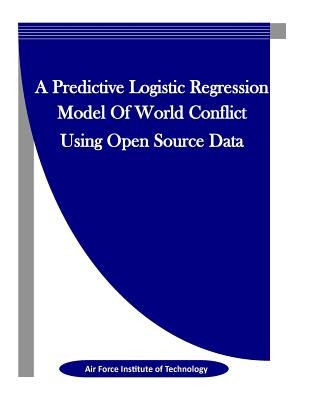| A Predictive Logistic Regression Model Of World Conflict Using Open Source Data Contributor(s): Penny Hill Press, Inc (Editor), Air Force Institute of Technology (Author) |
|
 |
ISBN: 1519773773 ISBN-13: 9781519773777 Publisher: Createspace Independent Publishing Platform OUR PRICE: $12.30 Product Type: Paperback - Other Formats Published: December 2015 |
| Additional Information |
| BISAC Categories: - Business & Economics - Political Science | Security (national & International) |
| Physical Information: 0.21" H x 8.5" W x 11.02" (0.57 lbs) 102 pages |
| Descriptions, Reviews, Etc. |
| Publisher Description: Nations transitioning into conflict is an issue of national interest. This book considers various data for inclusion in a statistical model that predicts the future state of the world where nations will either be in a state of "violent conflict" or "not in violent conflict" based on available historical data. Logistic regression is used to construct and test various models to produce a parsimonious world model with 15 variables. Open source data for the previous year is not immediately available for predicting the following year, so an approach is developed that ensures only historical data that would be available for such a prediction is used. Further analysis shows that nations differ significantly by geographical area. Therefore six sub-models are constructed for differing geographical areas of the world. The dominant variables for each sub-model vary, suggesting a complex world that cannot be modeled as a whole. Insights and conclusions are gathered from the models, a best model is proposed, and predictions are made for the state of the world in 2015. Accuracy of predictions via validation surpass 80%. Eighty-five nations are predicted to be in a state of violent conflict in 2015, seventeen of them are new to conflict since the last published list in 2013. A prediction tool is created to allow war-game subject matter experts and students to identify future predicted violent conflict and the responsible variables. |